Our Services

At Great Big Smiles™, we aim to provide as many potential dental services as your child may need as they grow throughout life. This includes, but is not limited to, comprehensive pediatric dentistry, orthodontics (braces), and wisdom tooth removal. From birth to braces and beyond!
With such busy schedules, we know how hard it can be trying to run from office to office to meet all of your child’s dental needs. By having most anticipated pediatric and adolescent dental services under one roof at our office, we can best utilize your and your child’s time to meet their dental needs. Another benefit of having most services at our office is that you will have the same dentist and same dental team that you know and trust doing your treatment each and every time.
One great service we provide is in-office conscious oral sedation dentistry. Not all pediatric dentists in the Greater New Orleans area provide this service and instead, choose to treat these patients under general anesthesia at the hospital. Our in-office sedation allows your child to be treated in our office with you present by their side for the entire treatment. In most circumstances, we can complete your child’s dental treatment with one or two in-office visits, thus eliminating the need to put your child to sleep at a hospital. In certain circumstances, some children do need to be treated at a hospital, and we provide that service as well. For more information, please click on the “In-Office Oral Sedation” and “Hospital Dentistry” links in the list below.
Remember, Dr. Nathan and his team provide pediatric dental services based on the recommendations set by the American Academy of Pediatric Dentistry (www.aapd.org).
Sedation Dentistry
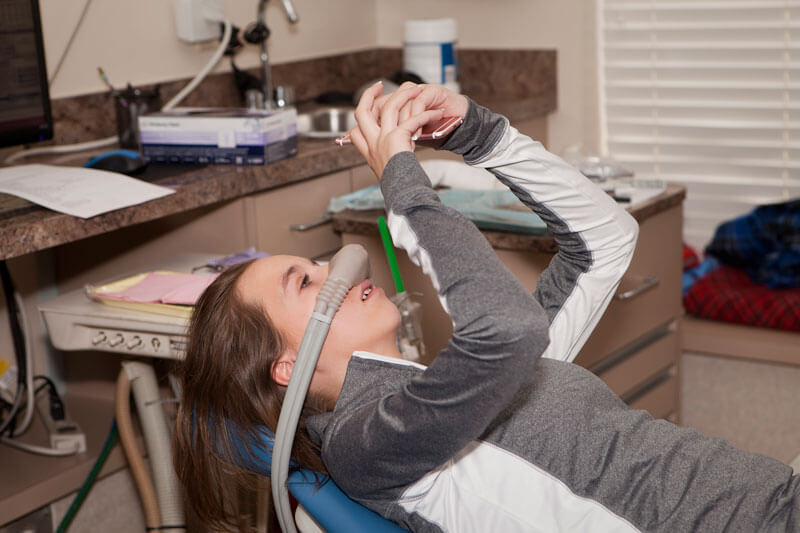
In-office Conscious Oral Sedation (when indicated) is performed in our office and allows you, the parent, to be by your child’s side during the entire treatment. Your child is given a medicated liquid (“sleepy juice”) to help alleviate anxiety and make the dental treatment faster and easier for them. We will also administer nitrous oxide (laughing gas, see other section on this) to better help your child relax. The combination of the liquid and the laughing gas makes most children relaxed and comfortable enough to handle the dental treatment. Your child will still need to be “numbed” by placing a topical anesthetic jelly and then an injection. Please do NOT tell your child this is going to happen and let us word all treatment in a kid-friendly manner. This in-office oral sedation procedure does typically make your child a little sleepy but does not put them to sleep. Your child will be breathing on their own and can usually respond to simple requests, such as “Open” and “Close”.
Most patients are fine to walk on their own afterwards but should not return to school that day. They can return to school and normal activities the following day. All of our dental assistants are certified in CPR and will be constantly monitoring your child with the required monitoring equipment to ensure their safety. In addition, Dr. Nathan is certified in CPR and Pediatric Advanced Life Support (PALS). He has undergone extensive specialty training in conscious oral sedation during his 2-year pediatric dental residency and maintains an active Conscious Sedation License, as issued by the Louisiana State Board of Dentistry. As an added safety measure, we only use sedative drugs that have a reversal agent drug if needed. Safety is our top priority and is taken very seriously at our office. Every measure will be taken to ensure the safety of all of our patients. This type of sedation not indicated on any patient below the age of 2. If your child is under the age of 2, then they may be a different type of sedation called IV sedation. If recommended for your child, Dr. Nathan and his team will discuss these procedures thoroughly with you and will be happy to answer any questions you may have.
More information coming soon!
Cleanings and Exams
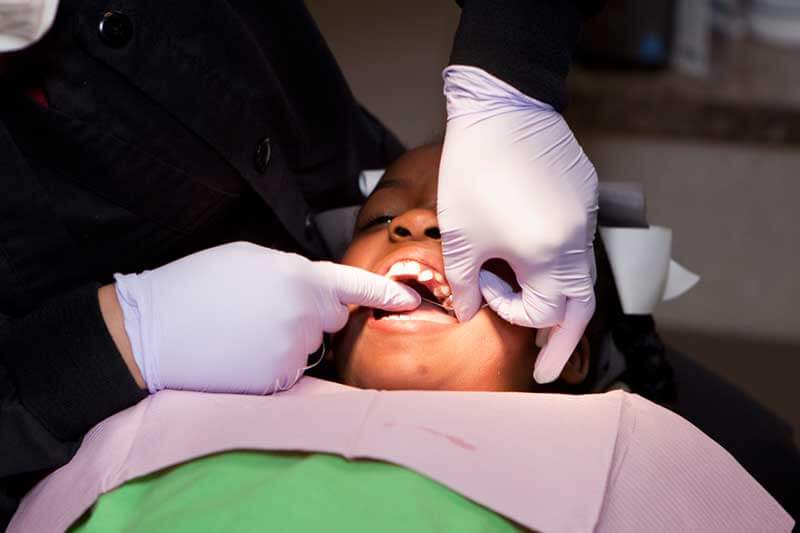
The American Academy of Pediatric Dentistry recommends taking dental x-rays on children on a periodic basis to evaluate for cavities, infections, missing teeth, proper growth and development of the jaws and teeth, and other potential problems that cannot be properly diagnosed with a regular visual exam. Each x-ray is different, and each child’s needs can be different at different times in their life. At our office, we strive to expose your child to the least amount of radiation as necessary. ALL OF OUR X-RAY EQUIPMENT IS COMPLETELY DIGITAL. This includes our bitewings, periapicals, cephalometric, and panoramic x-ray machines. Historically, x-rays have not been digital and thus created larger amounts of radiation. With our all digital x-rays, we can greatly reduce the amount of radiation (by more than 50 percent) we expose your child to. This is something very unique to our office, as there are some offices in the Greater New Orleans area that do not use all digital x-ray machines. We also have all our patients wear an approved leaded apron with a thyroid collar to further decrease the radiation exposure. Our all digital x-rays produce instant, high quality images that can be viewed immediately by Dr. Nathan, his team, and you and your child. No more waiting around for x-rays to develop. Being all-digital, we can also email these x-rays to you or other dental specialists if needed.
Begin cleaning your child’s teeth when the first tooth erupts, usually around 6 months of age. Some teeth can come in earlier; some can come in later. According to the AAPD, it is recommended to use a fluoridated toothpaste approved by the American Academy of Pediatric Dentistry (AAPD) or the American Dental Association (ADA). This should be written on the toothpaste box. Brush twice daily (morning and night) and floss nightly. Only use a smear amount of toothpaste in children under age 2, since most children will swallow it. Over age 2, use a pea-size amount of toothpaste. Do not rinse afterwards with water, as it rinses away the beneficial fluoride and other ingredients. This is a common mistake.
When brushing, most children will need their parents help and supervision until about age 6-8. Start flossing when teeth touch each other, as the toothbrush bristles cannot adequately clean in between teeth that are touching. This age varies.
Children typically start to lose their front bottom baby teeth at around age 5-6 and start to get permanent molars in the back at age 6. These permanent molars do not push out any baby teeth, but come in behind the baby molars. Keep in mind that most children will keep some baby teeth (baby molars in the back) until age 11-13. These teeth (and all baby teeth) are important for eating, talking, and guiding the permanent teeth into their natural positions.
How do children get cavities?
TRANSMISSION OF BACTERIA THAT CAUSES CAVITIES
Children are not born with the bacteria that causes cavities. It is usually transferred to them by their mothers or fathers. If the parent has a lot of dental decay (high amounts of bacteria), then they can transfer the bacteria to their child, making them more susceptible to getting cavities. Avoid sharing food, drinks, and eating utensils with people who have a history of or present dental decay.
DIET
Unfortunately, sugar (in some form or another) is present in almost everything we eat and drink. Milk, juice, infant formula, breast milk, fruit, and vegetables all have natural sugar. Lactose is the sugar in breast milk. Dextrose, corn syrup, fructose, glucose, and sucrose are all sugars that can cause cavities and are added to processed foods. Even ketchup, for example, has sugar in it.
Avoid allowing your child to fall asleep with a bottle or sippy cup of milk, juice, tea, or Coke. (You’d be surprised!) They can have these things before bed, but it is important to clean their teeth prior to falling asleep. Breast feeding at night can also lead to cavities. Of course, we understand that each case is different and there may be other health issues that require nightime liquids. However, rinsing with water or brushing again is always a beneficial option as well. Water is the only liquid at night that would not harm a child’s teeth.
Avoid having your child walk around all day with a sippy cup (unless it is just water). Constantly sipping on a sugary liquid can quickly cause cavities as the teeth are always in contact with sugar. Have your child quickly drink the liquid in a set amount of time.
Limit juice to 4-6 ounces per day. Juice has little nutritional value and is mostly empty calories. It has a very high sugar content, even “natural” juices. A lot of the early childhood cavities that we see are related to the frequency of juice drinking. Water is what your child needs. If your child does drink juice, add water to the juice to dilute it.
Avoid sugary breakfast cereals. Most children eat breakfast and then rush off to school without brushing their teeth. This leaves the sugar on their teeth all day. Try to brush after breakfast.
Avoid sugary snacks late at night. This is not only bad for their teeth, but can make them hyperactive from the sugar rush. Even with proper brushing, some sugar is still left behind on the teeth.
Sugarless gum, especially those with Xylitol, can actually help prevent cavities. Xylitol is a naturally occurring sugar that cannot be metabolized by the bacteria to create the acid that causes cavities. Look for this ingredient on the gum packaging.
Repairing Cavities/Fillings
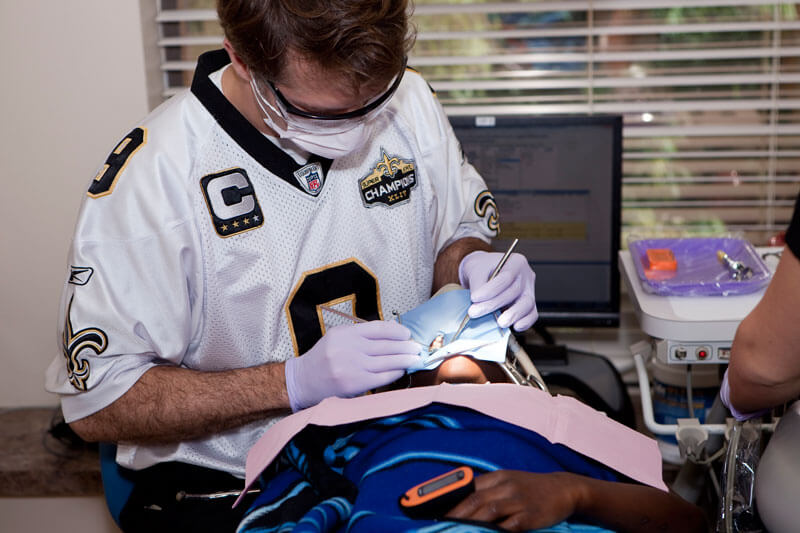
As mentioned in previous sections, we typically use nitrous oxide or some type of sedation to make the procedure easy for your child, before even starting the numbing process. Once the proper sedation technique has been administered, we place a topical anesthetic jelly (the “bubblegum jelly”) to numb the area where the injection will be placed. We then typically jiggle your child’s lips and cheeks and Dr. Nathan may make some “funny” noises to distract your child from what is actually happening. Each injection can be different, and each child can react very differently to the injection. Some children don’t feel a thing and don’t even know what happened. Please do NOT tell them what happened, as they may then get upset and may not continue to cooperate that day or another day if we have to do this again. Please do NOT tell them it is over until Dr. Nathan says is it is over. Each case varies on the amount and number of injections that are needed to properly numb your child. Most children become adequately numb in around 10-15 minutes. Again, each child and each day can be different. Some children may require additional numbing medicine or a different type of numbing medicine to achieve the proper “numbness.” If you have had a hard time getting numb yourself, please be sure to tell our staff and Dr. Nathan, as this situation can run in families. Please keep in mind that Dr. Nathan is very experienced and has numbed thousands of children in his time as a pediatric dentist. We will do everything in our power to make this procedure as easy as possible for your child. Some children may scream or cry when they receive the injection. This is ok. It is how your child is dealing with the pain. If they do, most children typically stop within a few seconds or minutes. Being positive and telling them they did a great job is the best way to help your child get through it.
Most children will be numb for about one hour after the procedure is completed. They will need to wait one hour before eating. They can immediately have something to drink but may drool a little because they cannot feel their lips. Please be sure to watch your child and advise them to not bite, chew, or suck on their lips, cheeks, or tongue. Because they cannot feel these numb areas, this could cause them to swell, bleed, and hurt if your child accidentally bites these areas. Please feel free to call our office if your child has any problems.
PLEASE PLEASE NEVER EVER threaten your child at home or in our office by telling them the dentist will give them a shot if they do not behave. This is very counterproductive and only make things harder on everyone…your child, us, and you. Thank you in advance for your help with this.
Crowns are typically indicated when cavities are very large, and a tooth cannot be properly restored with a filling. Each case can be very different, and we aim to explain to you exactly why and when a crown is indicated. Below are the various options we offer for crowns.
Stainless Steel (or Silver) Crowns
These are silver crowns done on baby (and some permanent) teeth in the back of a child’s mouth. We do not do silver crowns on the front teeth of children, and I try everything I can to do a white filing before resorting to a crown. Unlike the silver fillings (amalgam), silver crowns do not contain any mercury. They are mostly made of stainless steel. Most parents choose to do the silver crowns, and most insurances pay for only silver crowns on back baby teeth. We have other options for the front teeth.
White Crowns on Front Teeth (All-Composite Strip Crowns)
One unique option we have at our office for the front teeth is the ability to do some “white” crowns. On baby teeth in the front of a child’s mouth, we typically use all-composite “strip” crowns. These are all white and should last the life of your child’s tooth. Most insurances do pay for a portion of these crowns, and we will always find out any costs to you first before doing any treatment. If your child eats certain sticky or hard foods or candies, they could accidentally break a crown or pull it completely off. If a crown does come off, please keep the crown and bring it to our office. Our great team can advise you of the certain foods and candies to avoid. Your child’s tooth will fall out just like normal, with the crown glued to it.
Another white crown option may be zirconia crowns. These crowns are made of zirconia, which is essentially all-porcelain. They look very much like natural teeth in size, shape, and color. These white crowns are only indicated in certain conditions and may not stay on the teeth as well as the silver crowns. Again, each case and tooth can be very different, and we are more than happy to explain all the indications and advantages/disadvantages of each case. Be aware that most insurances do not cover this type of zirconia crown. However, we can always find out if your particular insurance does and/or what the estimated cost would be, prior to doing any treatment. Again, any baby teeth with a crown (silver or white) will fall out with the crown cemented on your child’s tooth, just like normal.
Please keep in mind, that we do NOT “pull or yank” teeth at our office. We “wiggle” them. Most children are afraid of the words “pull” and “yank.” Again, please use and let us use kid-friendly terms when explaining this procedure.
Most teeth to be extracted require numbing with local anesthesia (see previous section). We then use a special instrument to “wiggle” the tooth loose from the socket and then completely remove it with another instrument. Our well-trained team will explain the procedure to you and your child.
Some children will present at our office with baby teeth barely hanging on to the gums. If these baby teeth are very loose, then Dr. Nathan can simply “wiggle” them out with his fingers, without requiring any numbing or injections. The injection could be worse than when he wiggles them. Most kids barely flinch when this happens. We equate it to pulling a band-aid off. It is just like as if they lost the baby tooth on their own. Dr. Nathan will discuss this with you first before doing any “wiggling.”
Extracting baby and permanent teeth are very common procedures we do everyday in our office. It is not the same as having wisdom teeth removed. There is no anticipated swelling, and your child can return to normal activities that day. Usually, Children’s Tylenol, Advil, Motrin, or Aleve are all the pain relievers they should need. Very rarely are prescription pain meds needed.
Braces (Orthodontics)

Orthodontics are used to assist in aligning and straightening teeth in order to not only improve appearance, but improve your child’s bite. Having braces isn’t just about improving your smile; it’s also about improving your overall dental health. Better-aligned teeth allow you to clean your teeth more easily and more efficiently to better help keep your gums and underlying jawbones healthy. Orthodontics may be used to correct overbites, underbites, cross-bites, deep bites, crooked teeth, spaces between teeth, and other issues of the teeth and jaws. Braces may be used in conjunction with other orthodontic appliances to help make corrections to your child’s bite to allow for proper growth and development of their teeth and jawbones.
Children’s mouths are constantly growing and constantly changing. Every child’s growth and development can be very different and unpredictable at different ages. Some children may need an early round of braces to prevent problems from getting worse before starting treatment. This is called Phase I treatment and may be started when your child has a mix of baby and permanent teeth, typically around ages 8-10. These children may or may not need a second round of braces (known as Phase II or the “finishing and detailing phase”). Our goal in Phase I would be to hopefully correct issues early, so that your child may not need a Phase II at all or a very limited Phase II.
Other children may not need a Phase I treatment at all and may benefit from waiting for all the permanent teeth to come into the mouth and then starting braces. This is called Phase II treatment if your child had Phase I treatment. As your child grows, Dr. Nathan will always do a free orthodontic consult at each 6-month cleaning and check-up appointment. If any orthodontic treatment is indicated, Dr. Nathan will discuss as needed.
Other situations may arise that require the extraction of baby or permanent teeth, space maintenance, cross-bite correction, thumb/finger-sucking correction, or orthodontics (braces and/or various appliances). Again, at each appointment, we will assess your child’s needs as they grow and advise you of your options should they need any orthodontic treatment. Some cases can be more complicated or involved than others. Each case is meticulously evaluated and may need to be referred out to a specialist if we feel that we cannot meet all your needs at our office.

One unique aspect of our clear aligner retainers is that they can also double as bleaching trays, should your child ever want to whiten their teeth. If you were to go to a dentist and wanted to purchase bleaching trays by themselves, you would be charged anywhere from $300-$500. Because your child would already have the clear aligner retainers, you would only have to purchase the bleach from us (around $60) to then be able to professionally whiten your child’s teeth at home for the rest of their life.
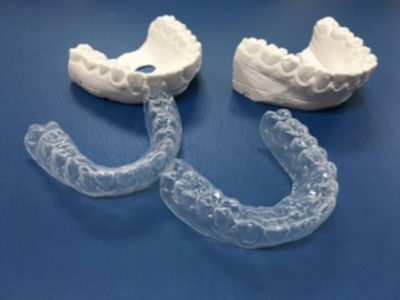
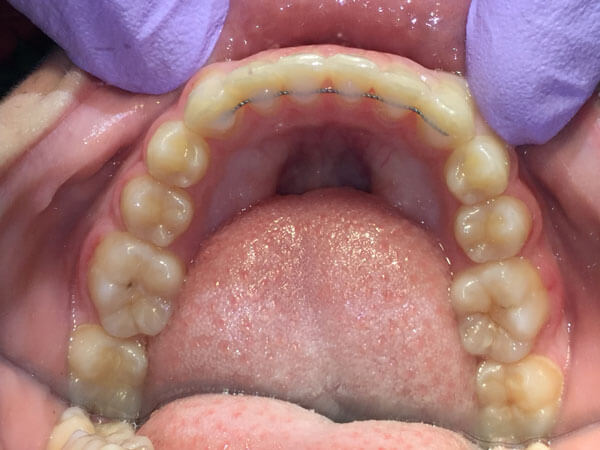
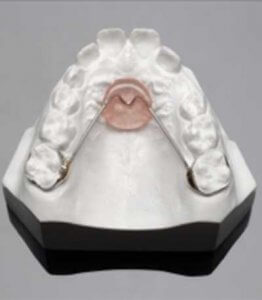
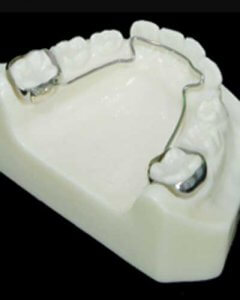
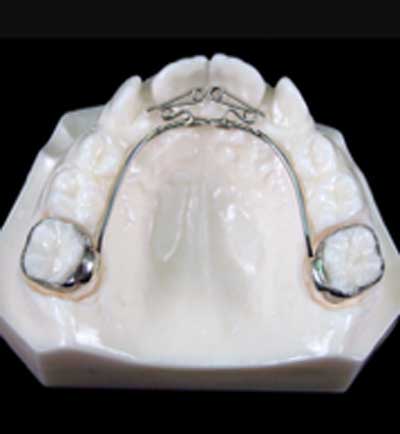
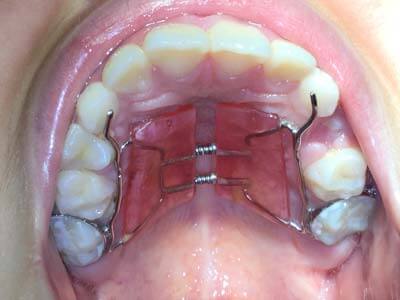
Some children have a very hard time stopping this habit, as they do it as a means to comfort or soothe themselves. There could be other family or social issues going on that may not make it an ideal time to stop. This could include a new sibling, a new house, a change in the family, or a new school, to name a few. Each child is different and has to be treated on an individual basis. Dr. Nathan can discuss with you the different options to try before resorting to an appliance. However, if all the other options have been tried and the child continues the habit, then an appliance to help the child stop could be indicated. This would be especially true if they are still doing the habit and have permanent teeth, as it could cause the upper and lower jaws to grow in an unfavorable direction.
These appliances can also be useful in children that have a tongue thrust or tongue swallowing concern. If a child has an open bite, then they automatically push their tongue forward into this open area to create a seal to swallow. Thumb/finger sucking appliances help stop a thumb or finger habit and/or help re-train an improper tongue position or swallowing pattern. It could be necessary to place the appliance to minimize the harm and distortion these habits or tongue position can have on the teeth and the jaws. These appliances are cemented to the back permanent or baby molars and have a wire that runs behind the front upper teeth. There are loops on the wire that prevent a child from being able to stick their tongue forward and prevent being able to stick their fingers or thumb into their mouth. They can’t close on their fingers or thumb to make the sucking sensation that they like. This appliance does not come in and out of the mouth and is generally left in position for at least one year, to ensure that the habit is totally gone. If the teeth/jaws are out of their normal position and if the habit is corrected at a young age (before all the front permanent teeth come in), then we usually see a spontaneous correction of the bite and teeth position. Of course, each case can be different, and treatment outcomes can vary. The main goal is to stop the habit. The child may or may not need additional orthodontic (braces) treatment in the future.
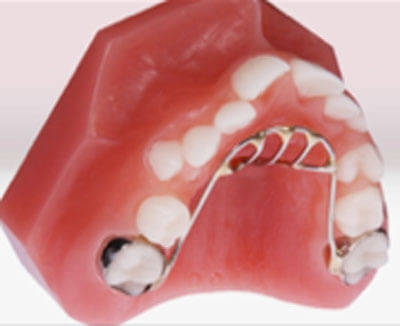
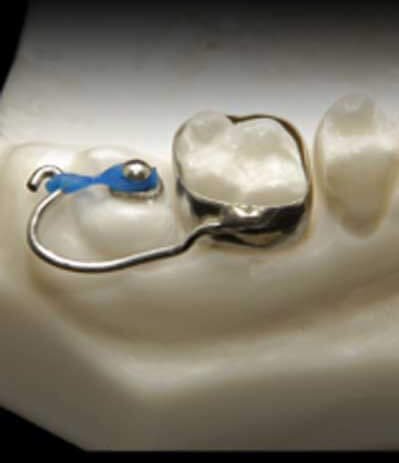
Cosmetic Procedures

Whitening, also known as bleaching, is the procedure used to brighten or whiten permanent teeth. At our office, we can make custom fit clear aligners (see previous section on orthodontic retainers) that fit over your child’s teeth. At home, these removable bleaching trays can filled with a bleaching gel. Your child then wears them a certain amount of time per day until the desired whitening is achieved. This bleach is perfectly safe for your child’s teeth and will not harm the teeth. Some sensitivity may be noted, so just don’t wear the trays as long each day or space the days out that your child wears them. Please keep in mind that how much a tooth whitens can vary from person to person. As always, please call us if there is a problem or you have any questions. Dr. Nathan and our great team are more than happy to discuss if this type of bleaching is right for your child.
Wisdom Teeth Removal
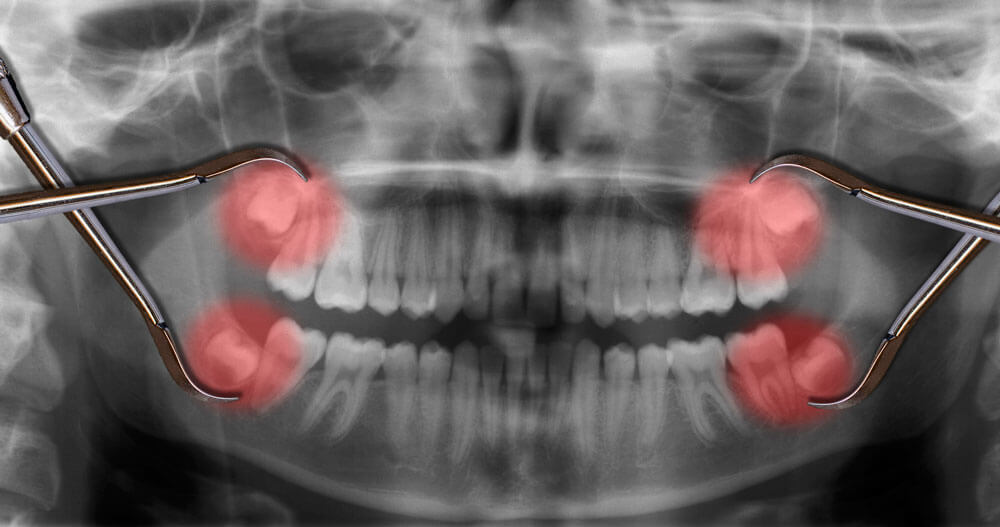
A wisdom tooth that is deemed problematic is normally extracted to avoid any oral complications. To have a wisdom tooth removed, a small incision is made to open up the gum tissue over the tooth and remove any bone that is covering the tooth. Once the tooth is in view, it is gently grasped with a dental instrument, known as a forcep, and gently rocked back and forth to loosen it from the jaw bone and surrounding ligaments. Sometimes the tooth may need to be cut into smaller pieces to make it easier for removal. Stitches may be necessary after the removal of a wisdom tooth.
This procedure is done in our office under IV sedation. IV sedation involves placing an IV in your child’s arm and administering a sedative medicine to make your child very relaxed. They may even fall asleep. Most children have no memory of the procedure. Typical recovery time is 1-3 days. If wisdom tooth removal is indicated and to make things more convenient for you and your child, we do have a dentist that comes to our office on certain Fridays and Saturdays to remove wisdom teeth. Dr. Nathan and our team can and will discuss this more in depth as needed.
